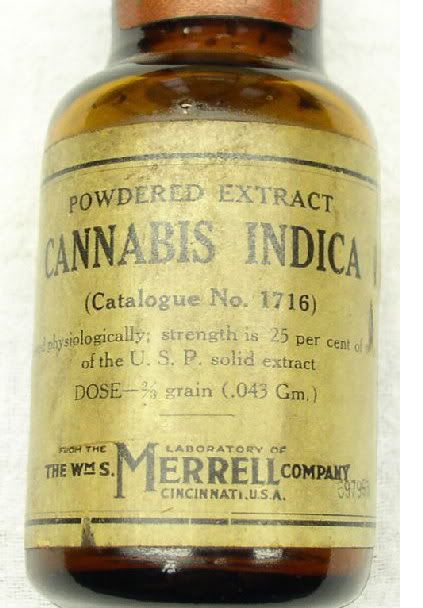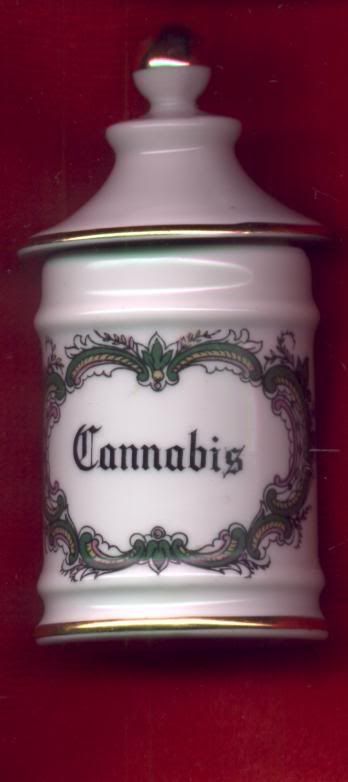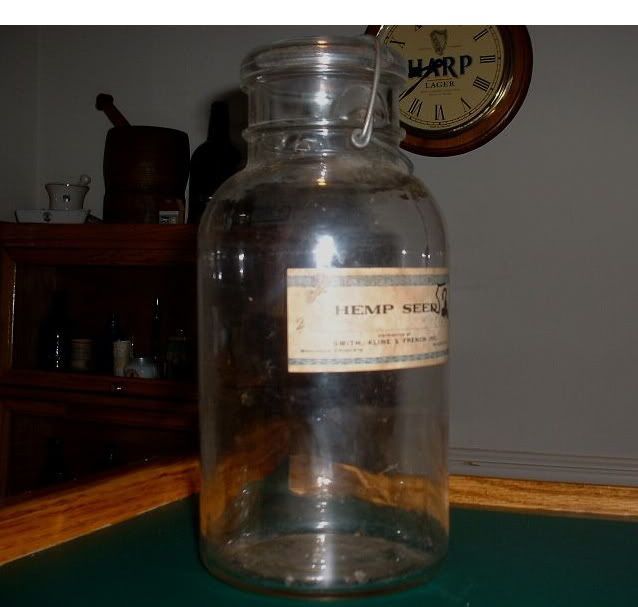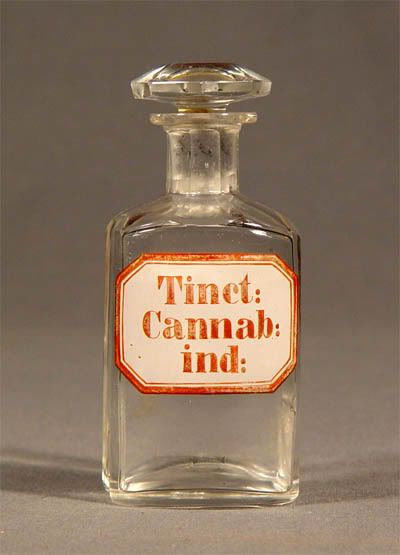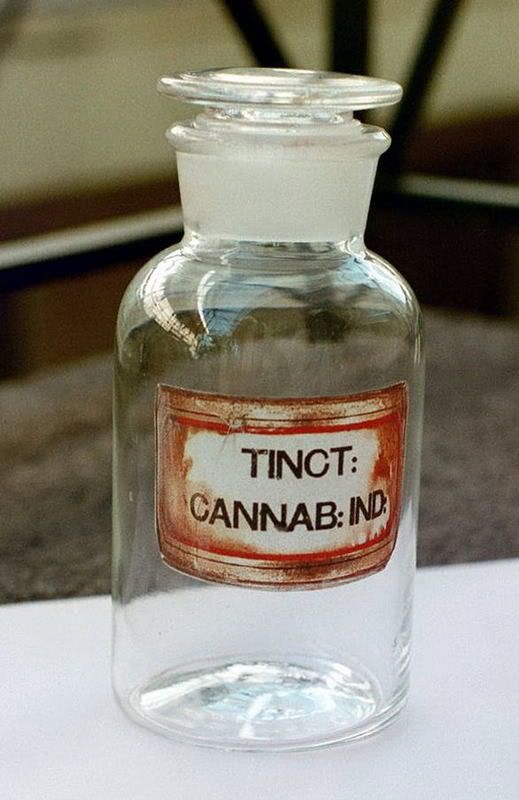FROM: Dale Gieringer
canorml@igc.orgSat, Nov 11, 2006 at 11:46 AM
To:
dpfca@drugsense.orgMarijuana, The Anti-Drug
by Fred Gardner for Counterpunch
The extent to which medical cannabis users discontinue or reduce their use of pharmaceutical and over-the-counter drugs is a recurring theme in a recent survey of pro-cannabis (PC) California doctors. The drug-reduction phenomenon has obvious scientific implications.
Medicating with cannabis enables people to lay off stimulants as well as sedatives -suggesting that the herb's active ingredients restore homeostasis to various bodily systems. (Lab studies confirm that cannabinoids normalize the tempo of many other neurotransmission systems.)
The political implications are equally obvious. Legalizing herbal cannabis would devastate the pharmaceutical manufacturers and allied corporations in the chemicals, oil, "food," and banking sectors. Put simply, the synthetic drug makers stand to lose half their sales if and when the American people get legal access to cannabis.
In the 10 years since Proposition 215 made it legal for California doctors to approve cannabis use by patients, the PC docs did not adopt a common intake questionnaire, and, with one exception, did not collect systematic data on which pharmaceutical drugs their patients had chosen to stop taking. However, the consistency with which the doctors describe this phenomenon has a force as impressive as any slickly presented "hard" data.
This summer I surveyed 19 PC doctors who, between them, had approved and monitored cannabis use by more than 140,000 patients. Herewith some replies to a question about patients reporting reduced reliance on pharmaceuticals.
Frank Lucido, MD: "Chronic pain patients report reduced use of opioids, NSAIDs, muscle relaxants, sleeping pills. Psychiatric and insomnia patients reduce use of tranquilizers, SSRI antidepressants, and sleeping pills.
Neurologic patients reduce use of opioids, muscle relaxants, NSAIDS, triptans and other migraine headache remedies."
Marian Fry, MD: "Medications discontinued or reduced include Oxycontin, Norco, Percoset, Vicodin, Flexerol, Soma, Valium, SSRI antidepressants, and blood-pressure medications Norvasic and Hydrochlorothiazide. Approximately 1% of my patients report reduced reliance or discontinuation of seizure medication by substituting Cannabis for Dilantin and remaining seizure free. Many of my Glaucoma patients no longer require their Timoptic drops and are able to maintain normal pressures with the use of Cannabis. Many of my patients who have lost hope in conventional pharmaceutical treatments report enhanced health, decreased pain, decrease depression and an overall sense of well being despite chronic illness."
Helen Nunberg, MD is medical director of MediCann, a statewide chain of clinics through which 53,000 patients have received approvals. Nunberg reviewed records of 1,800 patients seen at nine clinics. "Prescription drug substitution is very significant," she writes. "51% of the 1,800 patients report using cannabis as a substitute for prescription medications; 48% report using cannabis to prevent prescription medication side effects; 67% report using cannabis to reduce dosage of prescription medication; 49% of patients using cannabis for chronic pain were previously prescribed an opioid (such as hydrocodone) by their personal physician."
Philip Denney, MD: "Cannabis allows significant decreased use or elimination of many prescription medications, particularly narcotics. Patients usually report decreases of 50% or better."
Tom O'Connell, MD: "Vicodin and other opioids; lithium; Klonopin; various sleep aids; and the whole gamut of psychotropic medications from Prozac to Xanax. I don't tell patients to stop taking anything, but I will suggest they discuss it with the prescribing doctor. I have the feeling that most don't."
Robert Sullivan, MD: "Opiates, muscle relaxants, antidepressants, hypnotics (for sleep), anxiolytics, neurontin, anti-inflammatories, anti-migraine drugs, GI meds, prednisone (for asthma, arthritis)."
William Eidelman, MD: "Opioids, sleeping pills, anxiolytics, SSRI anti-depressants."
Hanya Barth, MD: "Approximately 90% of my patients have at one time or another tried traditional medications for their symptoms and found that they produced significant side effects. With cannabis most patients report either being able to manage their symptoms without any other medications, or using less than they would ordinarily have to. It is not unusual to have patients come for a recommendation, bringing a whole bag of medications that they are taking. They might then return the following year saying that they no longer needed many of them and had cut back on many others.
"It is also true that most patients who were using alcohol to manage their symptoms or who were abusing alcohol or speed or opiates, etc. find that they can stop these drugs when they have marijuana. Many also report that they were using those drugs to manage certain symptoms such as pain or anxiety and then became addicted. This is especially true of certain populations, mainly the homeless and the mentally ill. Even cigarette smokers often state that they can substitute cannabis for nicotine.
"What amazes me overall is the efficacy and lack of side effects. It is not that the pain stops but that the mind doesn't fixate on the pain in the same way. In addition, the muscles that become tense around an area of pain can cause secondary symptoms, which then are relieved with cannabis. If someone is in pain and/or anxious, he or she often has a hard time sleeping. With cannabis, patients report that they are able to sleep better, wake up more refreshed, have less secondary depression and are able to function more efficiently the following day. Many hypnotics can only be taken at a certain time (not at 4 a.m., for example).
However, having a puff of cannabis at that time will help them fall back asleep without a morning hangover."
Dr. A: "Narcotics, including heavy narcotics such as Fentanyl."
William Courtney, MD: "While the percentage of patients in my practice using cannabis for management of ADHD is small, those who have discovered its benefits are pleased that they can achieve control without having to continue to use Ritalin, etc."
Tod Mikuriya, MD: "Opioids, sedatives, non-steroidal anti-inflammatories, and SSRI anti-depressants are commonly used in smaller amounts or discontinued. These are all drugs with serious adverse effects."
Jeffrey Hergenrather, MD: "A cannabis specialist soon becomes aware of two remarkable facts. The range of conditions that patients are treating successfully with cannabis is extremely wide; and patients get relief with the use of cannabis that they cannot achieve with any other pharmaceuticals.
"The testimonies that I hear on a daily
basis from people with serious medical conditions are moving and illuminating. From many people with cancer and AIDS come reports that cannabis has saved their lives by giving them an appetite, the ability to keep down their medications, and mental ease.
"No other drug works like cannabis to reduce or eliminate pain without significant adverse effects. It evidently works on parts of the brain involving short-term memory and pain centers, enabling the patient to stop dwelling on pain.
Cannabis helps with muscle relaxation, and it has an anti-inflammatory action.
Patients with rheumatoid arthritis stabilize with fewer and less destructive flare-ups with the regular use of cannabis.
"Other rheumatic diseases similarly show remissions. Spasticity cannot be treated any more quickly or efficiently than with cannabis, and, again, without significant adverse effects.
"Patients who suffer from migraines can reduce or omit conventional medications as their headaches become less frequent and less severe.
"About half of the patients with mood disorders find that they are adequately treated with cannabis alone while others reduce their need for other pharmaceuticals. In my opinion, there is no better drug for the treatment of anxiety disorders, brain trauma and post-concussion syndrome, ADD and ADHD, obsessive compulsive disorder, and post-traumatic stress disorder.
"Patients with Crohn's disease and ulcerative colitis are stabilized, usually with comfort and weight gain, while most are able to avoid use of steroids and other potent immunomodulator drugs.
"People who were formerly dependent on alcohol, opiates, amphetamines and other addictive drugs have had their lives changed when substituting with cannabis.
"Patients with end-stage renal disease on dialysis and those with transplanted kidneys show mental ease, comfort, and lack of significant graft-versus-host incompatibility reactions in my small series.
"Diabetics report slightly lower and easier-to-control blood sugar levels, yet to be studied and explained.
"Sleep patterns are typically improved, with longer and deeper sleep without any hangover or significant adverse effects.
"Many patients with multiple sclerosis report that their condition has not worsened for many years while they have been using cannabis regularly. MS and other neurodegenerative diseases share the common benefits of reduced pain and muscle spasms, improved appetite, improved mood and fewer incontinence problems. Many patients with epilepsy are adequately treated with or without the use of other anticonvulsants.
"Patients with skin conditions associated with systemic disease such as psoriasis, lupus, dermatitis herpetiformis, and eczema all report easement and less itching when using cannabis regularly.
"Airway diseases such as asthma, sleep apnea, COPD, and chronic sinusitis deserve special mention because I encourage the use of cannabis vapor or ingested forms rather than smoking to reduce airway irritation."
All these clinical reports jibe perfectly with lab studies showing that synthetic THC enables rodents to achieve pain relief with half the amount of opioids. (Under the rules of evidence established by corporate Science, rodents are considered more trustworthy witnesses than we, the people, are.)
--
----
California NORML (415) 563-5858 //
canorml@igc.org 2215-R Market St. #278, San Francisco CA 94114




















